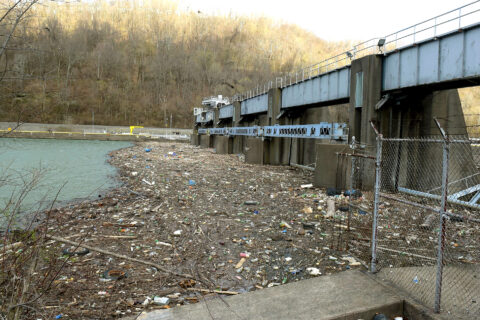In May, John Oliver’s show spotlighted the use of opioid settlement funds in state and local governments to highlight the opportunity for meaningful public health investments. In the segment, Oliver explained that some states are using opioid settlement funds for supplantatation: the practice of substituting existing dollars with opioid settlement funds. According to state guides created by OpioidSettlementTracker.com and VitalStrategies, 13 states and DC have restricted the supplantation of opioid settlement funds. For instance, Virginia’s Opioid Abatement Authority, which distributes settlement funds to local governments, explicitly states that funds must be spent on opioid remediation and may not be used to supplant existing program funding. (As noted by KFF Health News, states restrict supplantation in different ways: while some states prohibit supplantation for all settlement funds, others restrict supplantation only for local government settlement funds. The states restricting supplantation in some way are Connecticut, DC, Delaware, Kansas, Maine, Maryland, Massachusetts, Michigan, Nevada, New Jersey, New York, Vermont, Virginia and Wisconsin.)
As NLC has highlighted in the National Opioid Settlement Dashboard, local governments are directly receiving opioid settlement funds and have the opportunity to invest these dollars in meaningful public health investments. These investments, ranging from treatment and harm reduction to prevention and recovery, are intended to facilitate healthy communities and positive change through evidence-based approaches.
The Settlement Supplantation Debate
The $26 billion national settlement between opioid manufacturer Johnson & Johnson and three major opioid distributors was finalized in 2021 and represents the first and largest of the national opioid settlements. It allocates funds directly to states, cities and counties and declares that 85 percent of the settlement funds must go to opioid abatement and remediation. However, the definition of “abatement and remediation” may be unclear or imprecise for local leaders, and thus could function as a catch-all funding justification that leads to supplantation or investments in less impactful strategies.

At NACO’s Opioid Settlement Summit this January, Dr. Rahul Gupta, Director of the White House Office of National Drug Control Policy, offered his perspective on the settlements, affirming that settlement funds “are to support, not supplant, the federal and state and local resources that are available.”
Gregory Branch, Director of Baltimore County’s Department of Health and Human Services, offered another view that called for “more flexibility as it relates to the utilization of funding streams” given the changing nature of the opioid epidemic that now includes drugs like fentanyl (a synthetic opioid) and xylazine (a non-opioid sedative).
It is challenging – and can be confusing – for local governments to balance the suggestions of health experts recommending new public health investments, solutions and services with real-world challenges such as thin budgets, stretched resources and the changing landscapes of substance use issues.
Spotlighting Local Health Experts and Municipal Leaders
NLC’s recent webinar, Using National Opioid Settlement Funds: Local Strategies and Solutions, spotlighted state, county and city stakeholders who are using settlement funds to expand programs – addressing new and growing substance use needs in their community – as opposed to simply supplanting existing funding streams.
Dr. Marvia Jones, Kansas City (KCMO) Health Department Director, suggested that municipalities should invest funding to expand capacity, resources and services to fill the gaps in local opioid treatment and prevention. Instead of supplanting existing funding streams, KCMO initially identified gaps in their opioid treatment services by talking to local providers and growing their “safety net” for individuals with Opioid Use Disorder (OUD). KCMO’s City Council then made settlement decisions with the trusted assistance of health departments and local experts.
Mark Hayes, Executive Director of the Arkansas Municipal League, explained that municipalities seeking settlement funding apply through the Arkansas Opioid Recovery Partnership (AORP). AORP applications must incorporate evidence-backed strategies and are vetted by the AORP advisory committee experts (including physicians, OUD counselors and individuals with lived experience). Hayes explained that AORP has a similar focus as Dr. Jones in KCMO, focusing on gap funding to expand resources or implement new services in areas that lack capacity.

The City of Port Angeles, Washington, invested opioid settlement funds to launch Operation Shielding Hope, a post-acute overdose response pilot program housed under the Police and Fire Departments. The program, designed to combat the opioid epidemic, enlists community paramedics who respond to overdoses by providing immediate treatment and “warm handoffs” to refer individuals to supportive services. In NLC’s webinar, representatives explained that the program is an innovative settlement fund investment that builds meaningful relationships with the community.
Fundamentals for Local Governments
Health experts from Johns Hopkins published five guiding principles for the use of opioid settlement funds for states, cities and counties.
The first principle states, plainly, “Spend money to save lives.” It also acknowledges the supplantation struggle for many local governments, explaining, “Given the economic downturn, many states and localities will be tempted to use the dollars to fill holes in their budgets rather than expand needed programs. Jurisdictions should use the funds to supplement rather than replace existing spending.” Local leaders should keep this guiding principle in mind to invest in high-impact, evidence-backed strategies that expand their community’s public health infrastructure and OUD support systems.
There are other investment guidelines for local governments to learn from. In 2023, a coalition of more than 130 advocate organizations – experts on public health, overdose prevention, and drug policy – released a roadmap for local governments around investing settlement funds in evidence-based solutions.
The roadmap outlines recommendations to spend settlement dollars on Medication-Assisted Treatment (MAT), harm reduction interventions, housing and wraparound services, and it also asserts that funding should not be spent on further policing and incarceration as the primary response to drug use and overdose.
Additionally, collaboration is key for investing settlement funds. For example, Clinton County, Indiana collaborated with the City of Frankfort and additional local partners to build coalitions for investing opioid funds. Localities pooled their settlement dollars through 2038 to jointly fill service gaps in prevention and treatment, especially for underserved and hard-to-reach populations. Commissioner Jordan Brewer stated in NLC’s webinar, “It’s a no-brainer to work together to get the money out and moving.”
Local leaders should also take advantage of helpful resources to guide decision-making and stay up to date on the opioid settlements, such as the following:
- NLC’s National Opioid Settlement Dashboard, which presents your municipality’s total settlement amount and offers tailored investment recommendations;
- KFF Health News’ Opioid Settlement Payouts, which allows you to see the annual breakdown of settlement funds;
- OpioidSettlementTracker.com, a comprehensive guide to all opioid settlements as well as state and local spending plans;
- Opioid Settlement Grantmaking Opportunities for Community Organizations, which assists nonprofit organizations in identifying opportunities for utilizing opioid settlement dollars; and
- State Opioid Settlement Spending Decisions, tracking settlement announcements and administrative plans by state.


Conclusion
Public health experts have identified the opioid settlements as opportunities to invest in public health, opioid abatement and city solutions. Rather than replacing existing funding streams with these newly available settlement funds, local leaders should learn from the success stories of other municipalities and follow evidence-based recommendations from health experts and opioid abatement advocates. The opioid settlement supplantation issue is complex, and local leaders must work hard to maximize the impact of opioid settlement funds for the health and safety of their communities.
—–
NLC is committed to supporting communities and their leaders by providing resources, action-oriented solutions, and legal advocacy on behalf of local governments as they continue to lead the way in addressing our nation’s substance use crisis. Check out some of our resources below.













